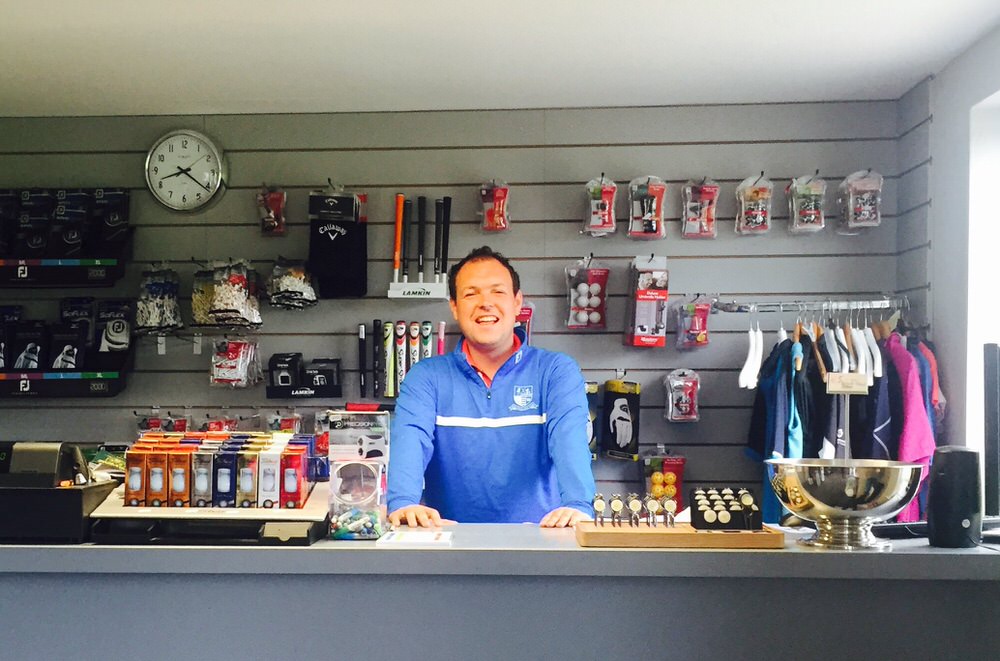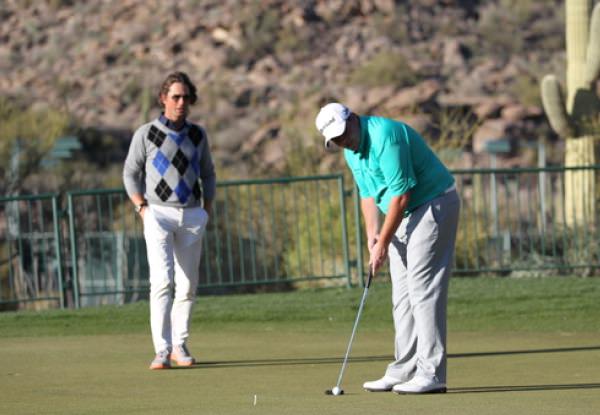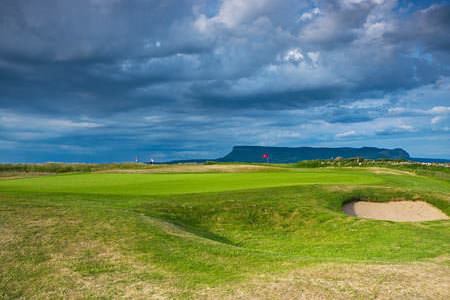As the void grows, Irish golf waiting for next wave

Pádraig Harrington was taken aback when he saw Paul Dunne win Final Qualifying for The Open at Woburn for the third year in a row.
“Wow. And he’s won it every year? That’s impressive,” Harrington said before taking stock of the state of Irish golf.
Including himself, Rory McIlroy, Darren Clarke and Graeme McDowell and with Shane Lowry a runner up in the US Open Irish golf has nine major wins in the past decade and three players under 30 capable of taking that haul to 10 at Royal Troon this week.
Look beyond Dunne, Lowry and the major winning toop headed by McIlroy and Ireland has few players on the European Tour.
Of the 10 who are on the Challenge Tour rankings, just two are in the top 45 and none are poised to graduate via the Top 15 right now.
“We’ve lost that middle tier,” Harrington said, referring to players like Damien McGrane and Peter Lawrie, who’ve lost their cards. “There must be a dozen French players on the main tour now. When I started there were three.”
Harrington’s point is that other nationalities are most likely being squeezed out to accommodate and extra nine or 10 Frenchmen. After all, Ireland had at least 10 tour players in 1997. Now of the 13 Irishmen in the Race to Dubai standings, just three are in the Top 110 - McIlroy, Lowry and McDowell.
It’s a worry for Irish golf and while young talents like Kevin Phelan, Dunne, his 2015 Walker Cup team mates Gary Hurley, Gavin Moynihan and Jack Hume or up and coming Challenge Tour players like Chris Selfridge or Ruaidhri McGee may make it, there are no guarantees.
The transition from top amateur to touring professional is fraught with difficulties but PGA Fellow Professional Jussi Pitkanen has taken a closer look at how life could be made easier for our future stars.
General sports lovers pay little attention to golf until a young Irishman or woman makes a major impression and bridges the yawning divide that separates life under the protective wing of the amateur bodies to success on the pro tours.
But given the success of Irish rugby since the academy system was put in place, it’s clear that golfers also need formal structures to prepare them for the transition.
Working out why so few Irish golfers make it through that minefield — just three Irish players have won European Tour cards via Q-School since 2010 while only a trickle are getting to the Challenge Tour— is something that fascinates Pitkanen.
And as part of his Masters in Sports Coaching studies he has produced a thesis entitled: “Elite Irish Golfers’ Experiences of Transition From Amateur To Professional” in association with Dr. Martin R. Toms from the School of Sport, Exercise and Rehabilitation Sciences at the University of Birmingham.
“The golfers I interviewed stressed how important it was for them to be directed initially,” said Pitkanen, who conducted in depth interviews with a number of unnamed Irish players about their experiences.
“It wasn’t about bashing the system at all. What emerged was how important it was for them to be identified correctly when they are getting into that part of their lives.
“They said they needed to be told, ‘These are the challenges you are going to face, this is what you need to know, this is where you need to go and this is what not to do.’
“So while some of that is in place, what emerged for me was that the players said they’d really love to have is a structured advice service.
“They spoke about the stuff the wish they’d known earlier and I guess that flip side of that is that you only learn those things by actually going out and doing it and being part of it.”
Born in Finland but a native of Co Meath since the age of 10 when his father took a job with Tara Mines, Pitkanen learned the game at Headfort and completed his PGA Training both there and at Royal Tara before qualifying and heading out onto the mini tours.
“That fizzled out pretty quickly and reality struck and I had to get a job,” confessed the 38-year old,
After six years at the Dave Pelz Academy at Killeen Castle, he is now the PGA’s Coach Education and Development Manager for Ireland and he’s passionate about his job and the further education of our professionals.
Some 30 new trainees join the PGA family every year with many qualified professionals going on to take more advanced coaching courses and postgraduate degrees.
By closely observing the Irish scene, Pitkanen has seen the likes of Rory McIlroy, Graeme McDowell, Shane Lowry and Paul Dunne make it big and become role models for Irish amateurs looking to make an impression in the professional game.
But the reality for the vast majority of those who take the plunge is very different and like those who watch the rugby academy system closely and compare our players with those coming though in the southern hemisphere, we may be starting too late.
With 19-year olds Renato Paratore of Italy and Marcus Kinhult on Sweden now established on the European Tour, European federations are finding ways to introduce their young players to professional competition at a very early age.
“Looking at the bigger picture, I was at an event recently where David Nucifora from the IRFU gave a talk on talent development and we were thinking how we could link that to golf,” Pitkanen said.
“He was talking about the Academy system and the argument he was making was that some of the Irish guys might be a little bit too old coming out of the Academy into full time professional rugby.
“You go to the southern hemisphere and you have guys breaking onto the international scene at 19 or 20 whereas our guys are really only coming out at 25.
“Kinhult and Paratore have been working towards a career as a pro since their mid to late teens and been going to tour school since they were 17. The phrase that was used, and which I found interesting, was that ‘tradition can be a handbrake.’
“So it all depends on what the end objective happens to be. Are we producing professional players? What’s our goal?”
Pitkanen’s thesis involved as series of interviews with young professionals and it emerged that three elements were hugely important in determining whether they were successful: psychological and emotional support from family, friends and coaches; financial implications; and the desire and motivation to succeed in a personal career
In other words, elite golfers turning professional need careful career guidance and proper preparation so they can make that transition.
That the Top 300 golfers in the world make 80 percent of the prize money says it all about professional golf.
Like moths to a flame, our most talented players will continue to turn professional so how best can they be helped?
Pitkanen knows what he’d like to see.
“Ultimately it would be fantastic if you could just walk into an office and speak to someone who will say, ‘this is what you will be able to play, this where you wont be able to play, this is how much it is going to cost, this is where you need to improve.’
“Some of that is in place but whose responsibility is it to have that conversation? That’s the million dollar question. I am not sure anybody has that answer.”





